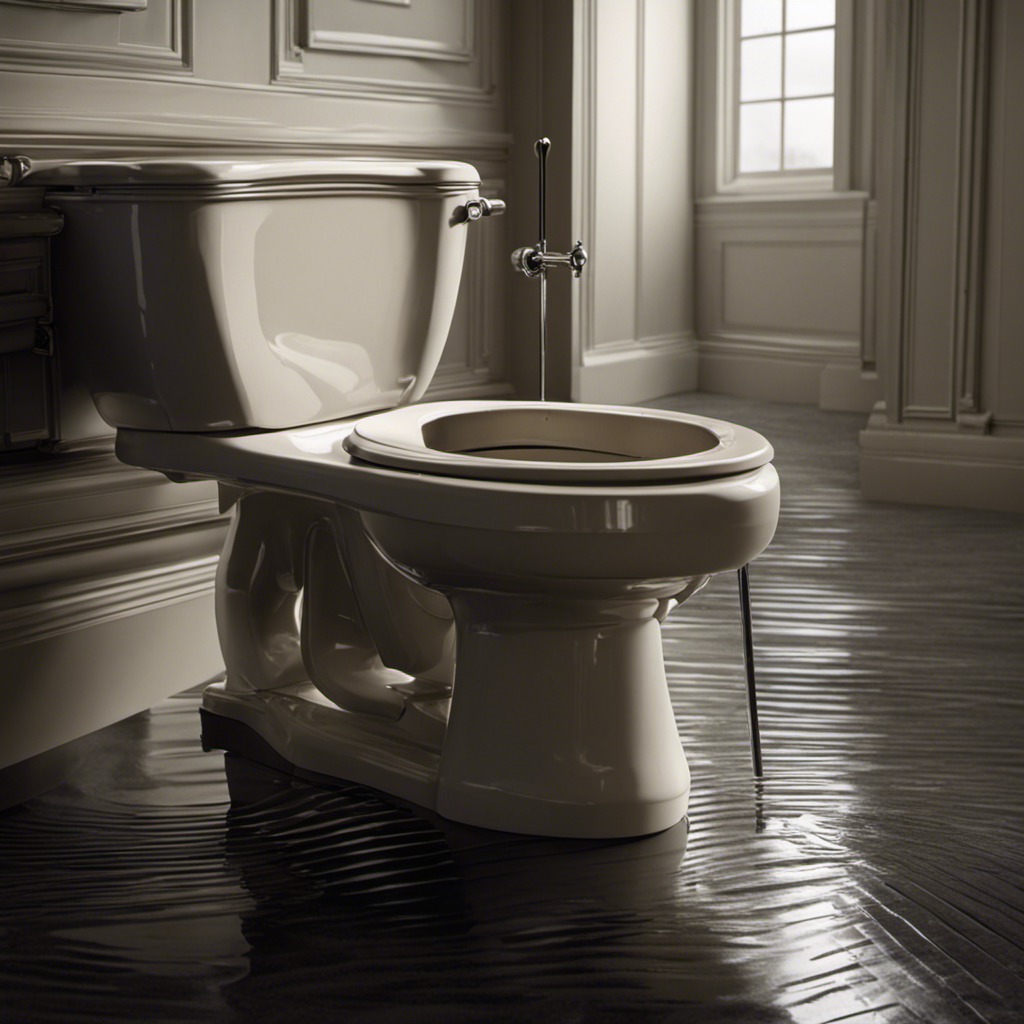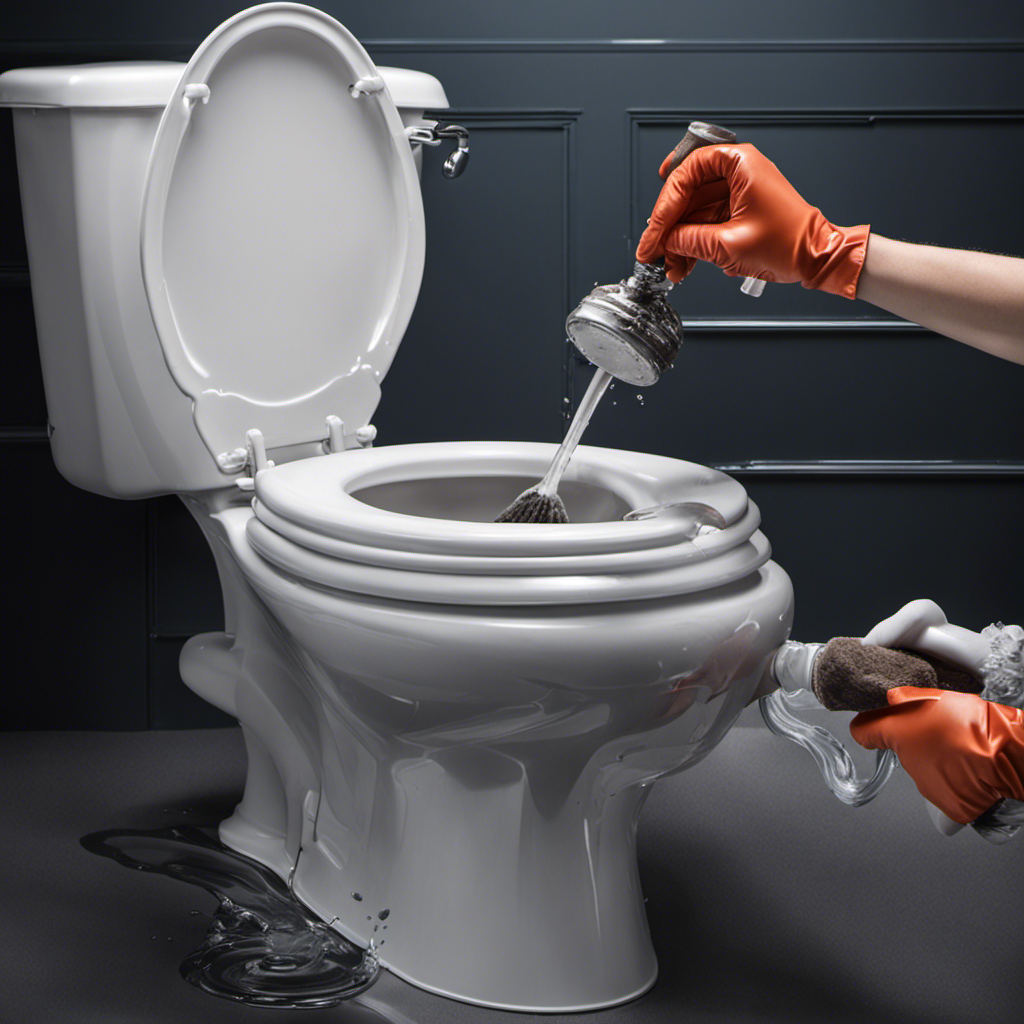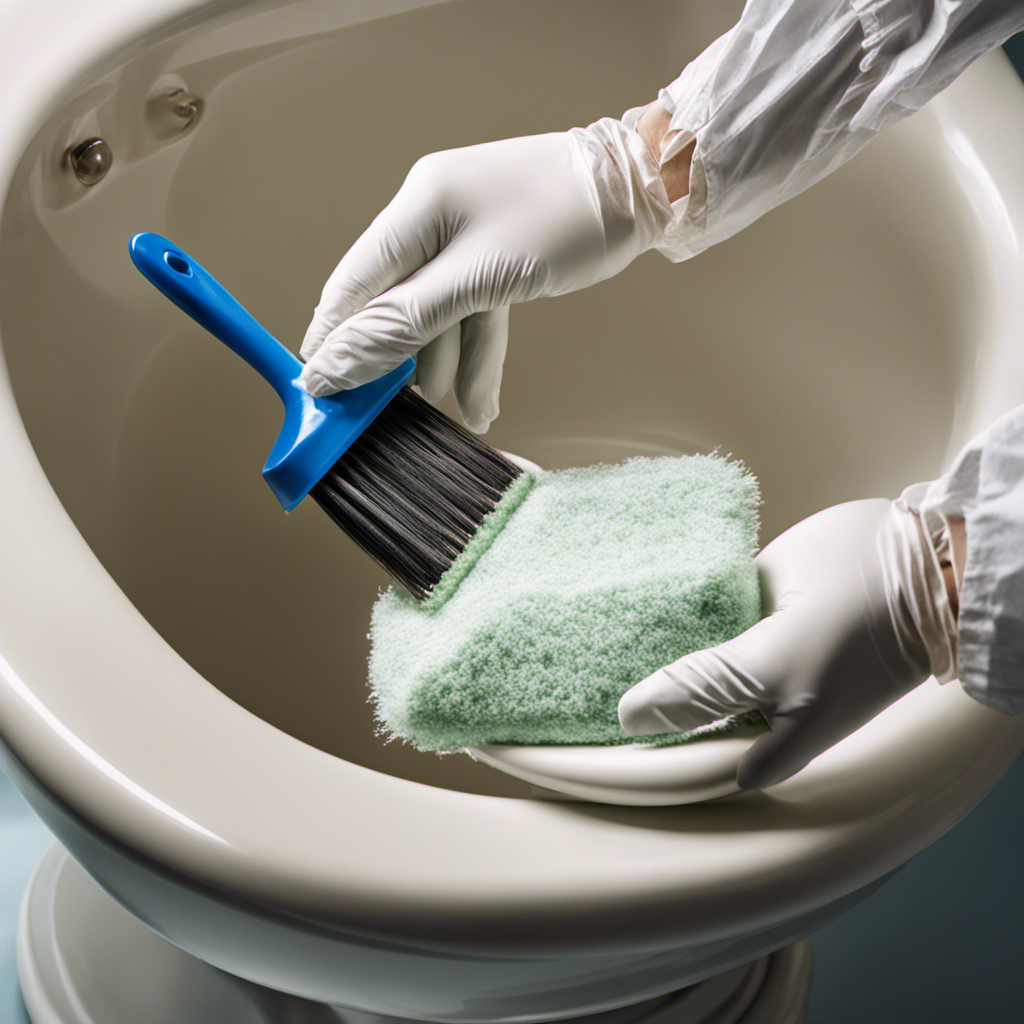As the saying goes, ‘Out with the old, in with the new!’ If you’re tired of your outdated toilet seat and ready for a fresh start, then you’ve come to the right place.
In this article, I’ll guide you through the step-by-step process of removing that old toilet seat and making way for a brand new one.
With a few simple tools and a little bit of elbow grease, you’ll have your bathroom looking stylish and modern in no time.
So, let’s get rid of that old seat and bring in the new!
Key Takeaways
- Assess the compatibility of the new toilet seat with the existing toilet bowl and measure the distance between mounting holes.
- Gather the necessary tools for the removal process, such as a screwdriver, wrench, replacement toilet seat, cleaning solution, and gloves.
- Remove the seat bolts by using a wrench to unscrew them in a counterclockwise direction, then lift the seat and lid off the toilet bowl.
- Detach the hinges or clamps by removing the screws or nuts securing them, inspect them for damage, and dispose of the old seat properly.
Assessing the Toilet Seat
First, you’ll need to check the condition of the toilet seat before attempting to remove it.
Start by assessing seat compatibility. Ensure that the new seat you plan to install is compatible with the existing toilet bowl. Measure the distance between the mounting holes and compare it with the dimensions of the new seat.
Next, inspect the current seat for any signs of damage. Look for cracks, chips, or loose hinges that may affect its stability. If you notice any damage, it’s important to address it before proceeding with the removal.
Once you have assessed the seat compatibility and checked for damage, you can move on to gathering the necessary tools for the removal process.
Gathering the Necessary Tools
Before you begin, make sure you have all the necessary tools for the job. Here are some items you’ll need:
- Screwdriver: This will help you remove the screws holding the old toilet seat in place.
- Wrench: You may need to use a wrench to loosen and remove stubborn nuts or bolts.
- Replacement toilet seat: Finding the right replacement option is essential. Make sure it fits your toilet and meets your preferences.
- Cleaning solution: Before installing the new seat, it’s important to thoroughly clean the toilet area to ensure hygiene and prevent any lingering odors.
- Gloves: Wearing gloves will protect your hands from any dirt or germs during the removal and cleaning process.
Removing the Seat Bolts
To start, you’ll want to unscrew the bolts securing the seat in place. Removing rusted bolts can be a challenge, but with the right tools and techniques, it can be done easily. One effective method is to use a wrench for easy removal.
Here’s a step-by-step guide on how to remove the old toilet seat:
- Grab a wrench that fits the size of the bolts.
- Position the wrench on the bolt head and turn counterclockwise to loosen it.
- Apply steady pressure while turning until the bolt is completely unscrewed.
- Repeat the process for the other bolt.
- Once both bolts are removed, lift the seat and lid off the toilet bowl.
Detaching the Hinges or Clamps
Once you’ve successfully unscrewed the bolts, you’ll need to detach the hinges or clamps holding the seat in place. To do this, follow these steps:
- Locate the hinges or clamps on either side of the seat.
- Use a screwdriver or wrench to loosen and remove any screws or nuts securing the hinges or clamps.
- Gently lift the seat and separate it from the toilet bowl.
- Inspect the hinges or clamps for any damage or wear. Replace them if necessary.
- Set aside the old seat for disposal or cleaning.
Detaching the hinges or clamps is an important step in replacing the seat or cleaning the toilet. It allows for easy removal and installation of a new seat, ensuring a hygienic and functional bathroom fixture.
Remember to properly dispose of the old seat and clean the area before installing the new one for a fresh and sanitized bathroom experience.
Properly Disposing of the Old Seat
When disposing of the old seat, make sure to check your local waste management guidelines for the proper method of disposal. It is important to be environmentally conscious and choose the most sustainable option available. There are a few different environmentally friendly disposal methods for old toilet seats. One option is to recycle the seat if possible. Some recycling centers accept plastic toilet seats, so check with your local recycling facility to see if they offer this service. Another option is to donate the seat if it is still in good condition. Many charitable organizations accept used building materials and home fixtures. Lastly, if recycling or donation is not possible, contact your local waste management authority for guidance on proper disposal methods.
| Environmentally Friendly Disposal Methods | Recycling Options for Old Toilet Seats |
|---|---|
| Recycling the seat | Check with local recycling facility |
| Donating the seat | Contact charitable organizations |
| Proper disposal methods | Consult local waste management authority |
Frequently Asked Questions
Can I Use Regular Household Tools to Remove an Old Toilet Seat?
Yes, you can use regular household tools to remove an old toilet seat. However, it’s important to know the common mistakes to avoid. Let me guide you through the process step by step.
Is It Necessary to Shut off the Water Supply Before Removing the Seat?
Yes, it is necessary to shut off the water supply before removing the seat. This will prevent any accidental leaks or water damage. Additionally, it is recommended to wear gloves when removing an old toilet seat for hygienic purposes.
How Do I Know if the Seat Bolts Are Too Tight or Too Loose?
Knowing if seat bolts are too tight or too loose is crucial for proper maintenance. Check for wobbling or difficulty in adjusting the seat. Tighten bolts until snug but not overly tight, ensuring a secure and comfortable seat.
Can I Reuse the Seat Bolts and Hinges/Clamps From the Old Seat?
Yes, you can reuse the seat bolts and hinges/clamps from the old seat if they are still in good condition. However, if they are damaged or worn out, there are alternative attachment methods available.
What Should I Do if the Seat Is Stuck and Won’t Come Off?
If the seat is stuck and won’t come off, don’t panic. There are alternatives to try before calling a professional. I once had the same issue and a little WD-40 did the trick.
Conclusion
Well, congratulations! You’ve successfully mastered the art of removing an old toilet seat. Who knew it could be so thrilling, right?
But hey, now you can proudly add this skill to your resume of life accomplishments. Just imagine the awe on people’s faces when you casually mention your expertise in toilet seat removal during a dinner party conversation.
So go ahead, pat yourself on the back, and revel in your newfound glory. You deserve it!










